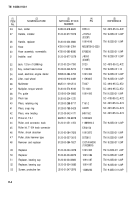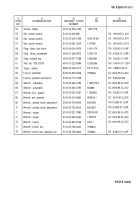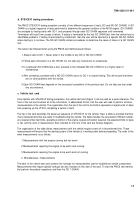TM-9-2350-311-20-1 - Page 1180 of 1275
TM9-2350-311-20-1
b. STE/lCE-R testing procedures
The PMCS STE/ICE-R testing procedure consists of two different sequences of tests: GO and NO-GO CHAINS. A GO
CHAIN is a logical sequence of tests performed to determine the general condition of the M109 engine. GO CHAINS
are arranged so testing starts with GO 1 and proceeds through each GO CHAIN sequence until terminated.
Termination will result from a pass or failure. If testing is terminated by the last GO CHAIN test, then the vehicle has no
identifiable problems. If testing is terminated by a failed test, then the user will be directed to a specific NO-GO CHAIN
where testing is to continue. The NO-GO CHAIN contains procedures to determine the cause of failure of a GO CHAIN
test.
The rules to be followed when using the PMCS test method areas follows:
1 Always start at GO 1. Never enter in the middle of any GO or NO-GO CHAIN.
2 Follow each instruction in a GO CHAIN. Do not skip any instructions or procedures.
3 If a particular GO CHAIN fails a test, proceed to the indicated NO-GO CHAIN or to a higher level of
maintenance.
4 After correcting a problem with a NO-GO CHAIN, return to GO 1 to restart testing. This will ensure that there
are no other problems with the vehicle.
5 Each GO CHAIN test depends on the successful completion of the previous test. Do not skip any test under
any circumstance.
c. Vehicle test card
Once familiar with STE/lCE-R testing procedures, the vehicle test card (Figure 1) can be used as a quick reference. The
front of the test card contains all of the information, in abbreviated format, that the user will need to perform common
measurements on the vehicle. The organization from the top of the card to the bottom represents a logical order of steps
from powering up the VTM to completing a series of tests.
The top of the card describes the power-up sequence of STE/lCE-R for the vehicle. Next, a table is provided that lists
many measurements that are useful in troubleshooting the vehicle. The table includes: the associated VTM test number,
any required offset test limits, operating condition of the engine, special connection required, the expected limits for pass
or fail, and the units of measurement. Also included on the front of the card are hookup diagrams.
The organization of the table allows measurements with the vehicle engine turned off to be performed first. These
measurements will ensure that the starting system of the vehicle is in working order before proceeding. The order of the
other measurements is as follows:
1 Measurements with the engine running but not warm
2 Measurements requiring the engine to be warm and running
3 Measurements requiring the engine to be warm and not running
4 Miscellaneous measurements
The back of the vehicle test card contains the hookups for measurements used to troubleshoot vehicle components.
Measurements that require special hookups are also included on this side of the card. To start the PMCS test method,
first perform the pretest inspections and then the GO 1 CHAIN.
I-3
Back to Top




















